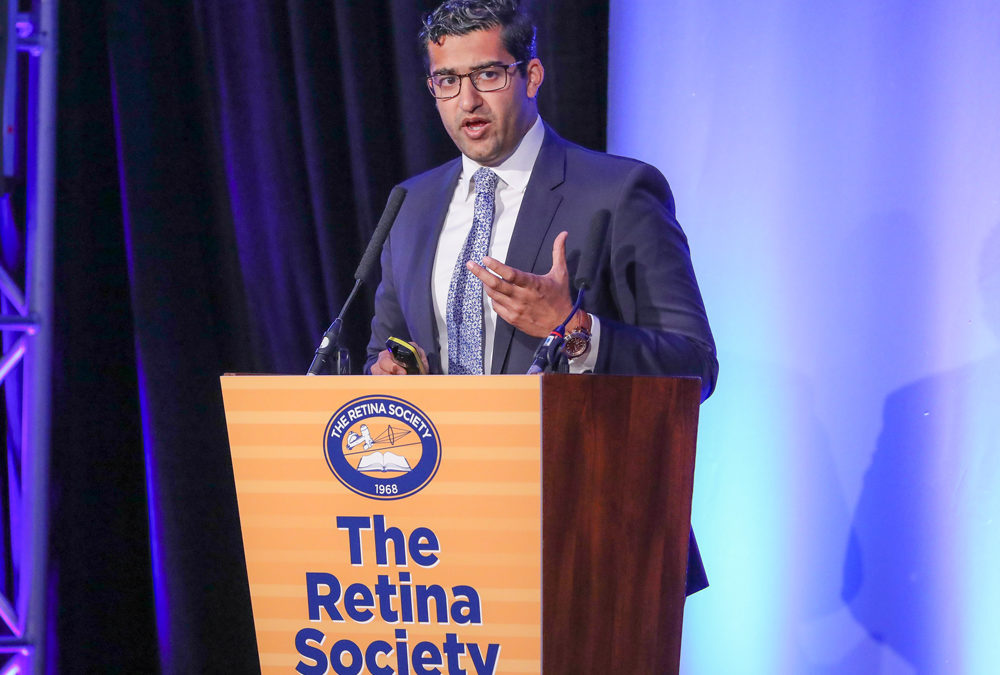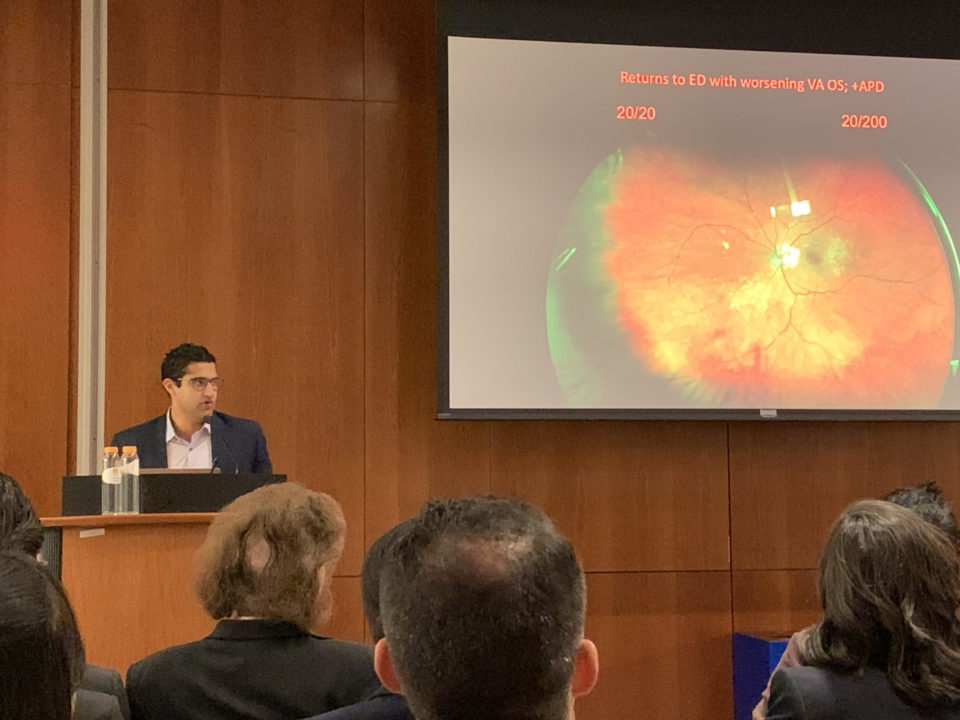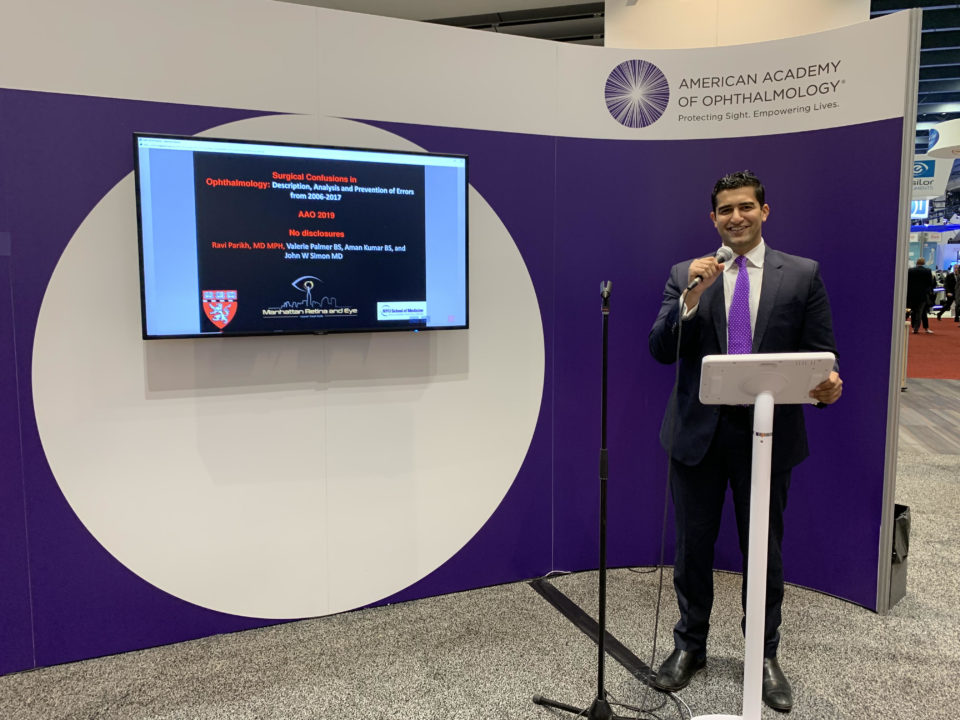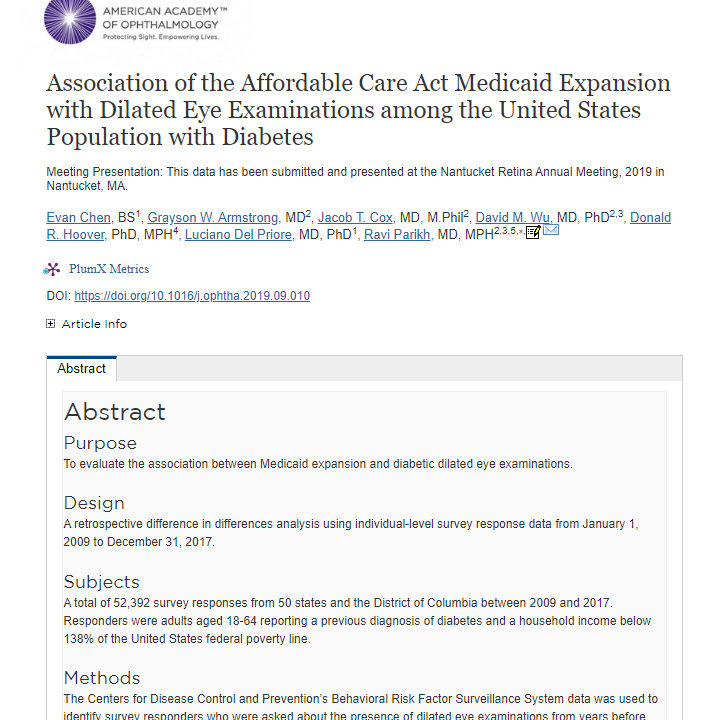
Seven Private Practice Physicians Win Support for Big Data Projects to Benefit Their Patients
October 7, 2019Ravi Parikh MD MPH presenting research at the Retina Society meeting in London, UK on how to make ophthalmic surgical procedures safer. He has recently published the largest study examining the prevention of errors in ophthalmology across all sub-specialties to date found here in the journal Ophthalmology (the leading clinical journal in the field).
Purpose
To characterize surgical confusions in ophthalmology to determine their incidence, root causes, and impact on patients and physicians.
Design
Retrospective cohort study of errors in ophthalmic surgical procedures between January 1, 2006, and December 31, 2017.
Participants
One hundred forty-three cases involving surgical confusions.
Methods
Cases were identified by the Ophthalmic Mutual Insurance Company from closed case files and by the New York State Health Department from the New York Patient Occurrence Reporting and Tracking program that identified the surgical confusions.
Main Outcome Measures
Incidence and impact by intended surgery, error type, and root cause as well as preventability by the Universal Protocol.
Results
Of the 143 cases of surgical confusions identified, 92 cases (64.3%) were deemed preventable by the Universal Protocol. Approximately two thirds, 95 cases (66.4%), were cases of incorrect implants being used during cataract surgery (cataract extraction and intraocular lens implantation), of which 33 cases (34.7%) were not preventable by the Universal Protocol. Wrong eye blocks or anesthesia accounted for 20 cases (14.0%), incorrect eye procedures accounted for 10 cases (7.00%), incorrect refractive surgery measurements accounted for 6 cases (4.20%), incorrect patient or procedure accounted for 5 cases (3.50%), incorrect intraocular gas concentration accounted for 4 cases (2.80%), and incorrect medication in surgery accounted for 3 cases (2.10%). The most common root cause of confusion was an inadequately performed time out, which was responsible for nearly one third of all surgical confusions, 46 cases (32.2%). Incorrect lens orders or calculations before surgery (so-called upstream errors) were the second most common cause of surgical confusion, involving 31 cases (21.7%). The average legal indemnity for incorrect implant during cataract surgery was $57 514 (United States dollars). The average indemnity for incorrect refractive surgery measurement was $123 125, that for incorrect eye procedure was $50 000, and that for incorrect gas concentration was $220 844.
Conclusions
Most surgical confusions could have been prevented by following the Universal Protocol properly. However, upstream errors, originating in the clinic or office before surgery, and ineffective communication during time outs suggest a need for modification of the Universal Protocol.
Related posts







